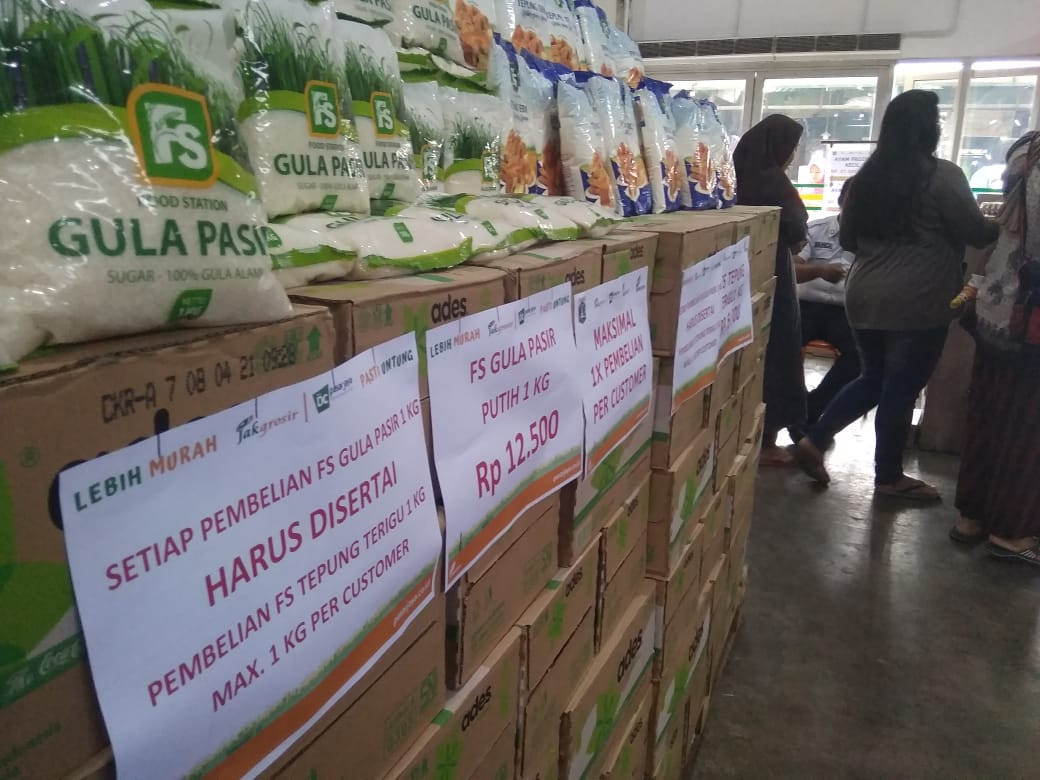Popular Reads
Top Results
Can't find what you're looking for?
View all search resultsPopular Reads
Top Results
Can't find what you're looking for?
View all search resultsGovt seeks to boost production, attract investment to control sugar price in 2021
Logistical disruption due to the COVID-19 pandemic on top of short supplies led to the price hikes, which peaked on average in April.
Change text size
Gift Premium Articles
to Anyone
T
he government is ramping up sugar production and working to attract more investment in the industry to prevent a shortage of the commodity and price hikes in 2021 as the country seeks to recover from the pandemic downturn.
The Agriculture Ministry is preparing to work on intensification of 200,000 hectares of land on Java island with state-owned enterprises (SOEs) and [land expansion] of 50,000 ha of land outside Java with private businesses for sugarcane plantations. The aim is to raise sugar production by around 676,000 tons by 2023 and make Indonesia less reliant on imports.
“It will not be enough with the limited land on Java. So we need to prepare extensification outside Java, especially on the remaining available lands that are quite large,” said Agriculture Minister Syahrul Yasin Limpo during the National Sugar Summit on Tuesday.
Early this year, short supply led to an increase in the average price of sugar, which surpassed Rp 20,000 (US$1.42) per kilogram, higher than the price ceiling of Rp 12,500 per kg set by the government. The logistical disruption due to the COVID-19 pandemic on top of short supplies led to the price hikes, which peaked on average in April.
Read also: Government call to ramp up sugar production bearing fruit but price remains high
On Tuesday, the average price of sugar stood at Rp 14,400 per kg, still around 15 percent higher than the price ceiling, according to data from the Center for Information on Strategic Food Prices (PIHPS).
With a shortage of sugar taking place across 30 provinces in April, the government has been issuing policies aimed at securing supplies in the short run, such as relaxing imports.
The government estimates that Indonesia’s yearly sugar production needs to reach 5.9 million tons, of which 52 percent are for raw materials and the rest for direct consumption, according to data provided by Musdhalifah Machmud, the food and agribusiness deputy coordinator at the Office of the Coordinating Economic Minister.
This year, sugar production was estimated to reach 2.2 million tons, less than half of the estimated demand, Agriculture Ministry data show.
Indonesia imports sugar to fill in the gap and ensure there is enough spare. In 2019, the country’s sugar imports reached about 4 million tons, making it the world’s largest sugar importer, according to data from Statistics Indonesia (BPS). Thailand, Australia, South Korea, Malaysia, Singapore and Brazil were the main sources of imports.
“We need to make imports to fulfill our national food needs,” said Musdhalifah.
To boost production at home, the government is also trying to lure investment in developing sugar mills.
From 2019 to 2020, the government recorded four new sugar mills with a production capacity between 6,000 and 12,000 tons of cane per day (TCD), according to Industry Ministry agro industry director general Abdul Rochim. The four sugar mills were developed in East Java, South Sumatra, Lampung and East Nusa Tenggara.
“In developing new sugar mills, there are many challenges faced by investors, among them the availability of clean and clear land, and the development of a sugarcane plantation, which takes quite a long time,” said Abdul.
Bustanul Arifin, an expert on agriculture from Lampung University (Unila), estimated that reaching self-sufficiency in sugar would require land expansion of between 400,000 and 700,000 ha for sugar plantations.
He went on to say that the government could not force the sugar price below or equal to the price ceiling if no agencies or sellers could sell at that price level.
“The price policy needs to be credible,” said Bustanul, who is also a senior researcher at the Institute for Development of Economics and Finance (Indef), in the discussion. “Even [the State Logistics Agency (Bulog)] cannot enforce it. This matter cannot be left to the food task force, which will create a new distortion.”










